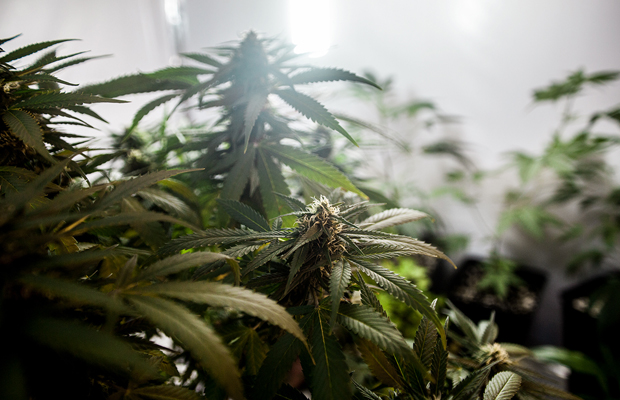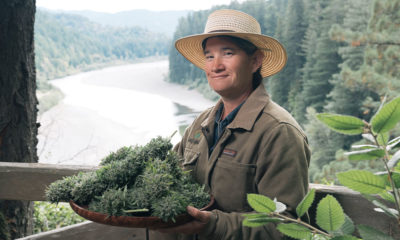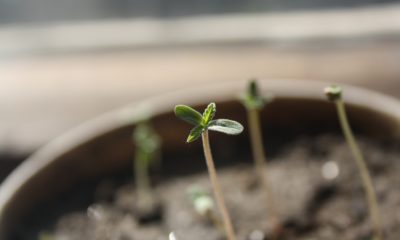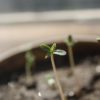Cultivation
Become a Closet Grow Pro
Photo by Prensa 420 Photo Collective
The first thing to think about when considering a closet grow operation is space. The amount of planting area must be proportionate to the power rating of the grow lamp that will be used. For example, a 1000-watt lamp will cover more area than a 400-watt lamp will. There are four general lighting options most cultivators opt to employ including fluorescent lighting, metal halide lighting, mercury vapor lighting and high-pressure sodium lighting. Each has its own pros and cons.
The intensity of any light source may be measured in lumens. Each type of lighting has different light intensity values per watt of power and in different spectrums. A fluorescent bulb at 40 watts will put out 3000 lumens. The light is pure white, with very little heat generated. A mercury vapor bulb at 175 watts will put out 8000 lumens. The light has a tinge of blue to it and there is a lot of heat generated. A metal halide bulb at 400 watts will put out 36000 lumens. The light has a lot of blue to it, much higher in the spectrum than the mercury vapor. The metal halide bulb puts out less heat than does the mercury vapor, which is a good thing. A high-pressure sodium bulb at 400 watts will put out 45000 lumens. The light has a visibly orange color to it. The high-pressure sodium bulb puts out about the same amount of heat as the metal halide.
Let’s consider an area about 4 feet long and 3 feet wide or 12 square feet. That’s a perfect size for a 1000-watt metal halide system that will put out 90,000 lumens. The recommended amount of light per square foot for cannabis is 3500-lumens-per-square-foot. The recommended amount is a compromise between what the plants need for normal, healthy growth and what the average person wants to pay in terms of cost of equipment. With a closet that’s 12 square feet, there will be about 7000 lumens per square foot.
Some growers may argue that 7000 lumens per square foot is overkill, but the simple fact remains that this plant loves a strong light source. You’ll get more plant with more light and the concentration of the good stuff will be amazing. This set up will turn even the most impotent of strains into the couch glue potency range. Once lighting is covered, you can move on the variety of growing methods.
The most basic hydroponic method uses a common planting container filled with peat moss and fortified with Perlite. It has the advantages of being requiring little or no maintenance for the entire life cycle of the crop. Simply feed the plant some nutrient solution once or twice a day and watch it explode into lovely green foliage. The Perlite is required to increase the moisture holding capacity of the growing medium. Perlite is cheap, commonly available and wonderfully inert, so it won’t interact with the nutrient solution to rob the crop of essential nutrients.
A rockwool cube with a rooted clone or seedling should be buried in the pre-moistened peat and Perlite. Be sure to not bury the top of the cube, just the sides and bottom. Peat is very porous, so the roots have a very airy environment to grow through. This moist, oxygen-rich environment is exactly what the roots need to gain a solid footing in the growing medium. Rapid and prolific rooting is the key to future foliage growth.
The ebb and flood method uses a growing medium of pea gravel, sand or something similar texture. There’s a lot of flexibility here. The idea is to allow room for the roots to grow through the medium unimpeded. This method can be complex, though it doesn’t have to be. The most basic setup has a growing tray filled with the chosen medium. Connect to the bottom of that a hose, with the other end of the hose connected to the bottom of a bucket, which will be the nutrient reservoir. Fill the reservoir with the nutrient solution and then lift the reservoir higher than the top of the growing medium. The nutrient solution flows from the reservoir into the growing tray, flooding the growing medium with nutrient. Put the reservoir on the floor and the nutrient flows from the growing tray back into the reservoir.
The major advantage to this method is that the roots are constantly moist and highly oxygenated. The solid, heavy growing medium holds the roots better than the peat and Perlite method. There’s also a large amount of room between the grains of the growing medium, so the roots will grow almost entirely unimpeded. They’ll waste less energy trying to plow through the medium, making an extensive early root system. This lends itself to spectacular results later on.
One drawback to this method is that the tray has to be flooded three to four times daily, religiously. This is a good reason to explore automating an ebb and flood setup. Use a pump to fill the growing tray, a float switch to tell when the growing tray is full, and an electric valve that opens to allow the nutrient to flow back into the reservoir. An electric timer is also a must for this system.
Do you grow in your closet? What are some tips you have for others? Share them with us below.



























